
Today we are going to check out the Adam Audio A5x, and the AX Series might be Adams most popular series, because I keep seeing the speakers in this family being used in the studios of many people I watch on youtube, so I was really curious to see how good they are.
We are also going to compare them with the T5Vs, which are Adams more affordable monitors, and these retail for around 400 US dollars or 40,000 Rs., while the A5X retail for around 1000 Dollars or 85,000 Rs., so we’re going to find out whether it is worth spending more than twice as much on the A5X, and which one of these two you should go for if your budget is somewhere in middle of their price point, and you are confused between the two.
UNBOXING


In the box, you get a manual, a mono RCA stereo link cable that is actually very good in quality, then there’s the power cable, and finally you get to the speakers.
DESIGN

I really like how the A5X look, while I do appreciate the minimalist aesthetics of the T5Vs, the A5xs also look stunning with their industrial design with all these screws and a completely metal waveguide for the tweeter.

This is a front ported speaker, so we have these oddly shaped holes on the A5X because of space constraints. The larger A7 and A8X have round holes which look nicer, but I also don’t mind how the ports look on the A5X, and of course the advantage of a front ported speaker over a rear ported speaker like the T5Vs is that you can put it closer to the wall without affecting its sound.

The build of the A5x is really good, the front facia seems to be made of a material that feels almost too good and dense to be plastic, it has a very matte and rough texture to it, so it is the kind of a material that will continue looking like this for a very long time.

These are actually more compact than the T5Vs even though they are a heavier pair of speakers.

The 5 inch woofer they have used is made up of a mix of Carbon, Rohacell, and Glass, and it looks really amazing with its glossy finish on its carbon fibre texture which sets a really nice contrast in their otherwise completely matt design.
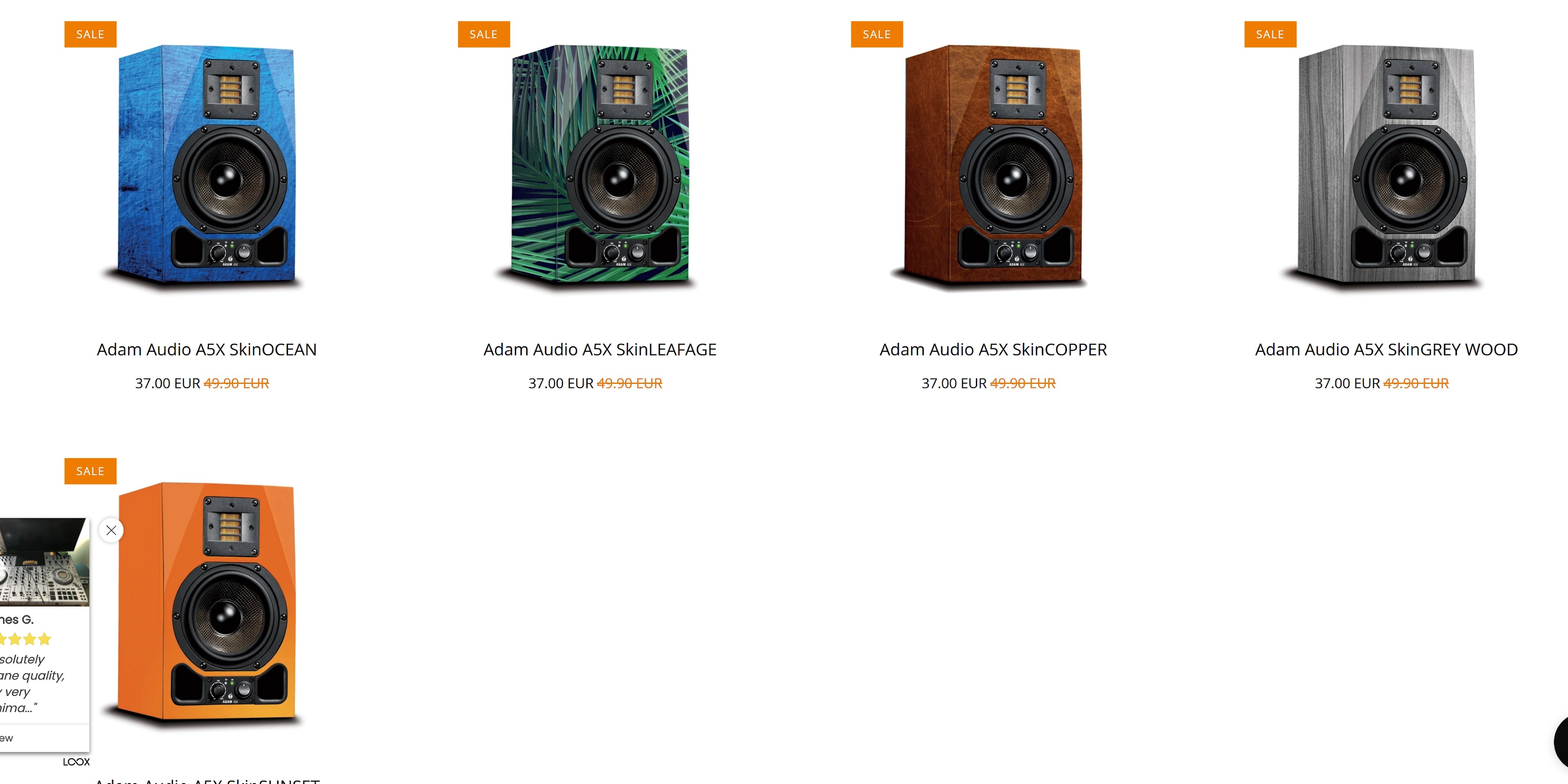
You can also apply different skins to them, so you can give a white color, or you can go crazy and go with a Tarzan theme.
CONTROLS

On front they feature a power switch, and a volume control, which has a detent on the central 0dB point so it’s easy to set there quickly, and you also have the power LED and a stereo link LED which lights up when you use that.
The T5Vs have all of these controls, and the LED at their back, and having volume and power controls on front may not seem like a big deal, but if you research, the aren’t many professional monitors that have volume control on front (because they expect you to use a monitor controller), and it also allows you to quickly change the left-right channel balance because you can control volume on each monitor individually on front.

At back, you get inputs and outputs for the stereo link which we will talk about soon, an unbalanced RCA input, and a Balanced XLR input. If you plug in both RCA and XLR, then the signal would just get mixed on the A5Xs and you’ll hear both audio sources,
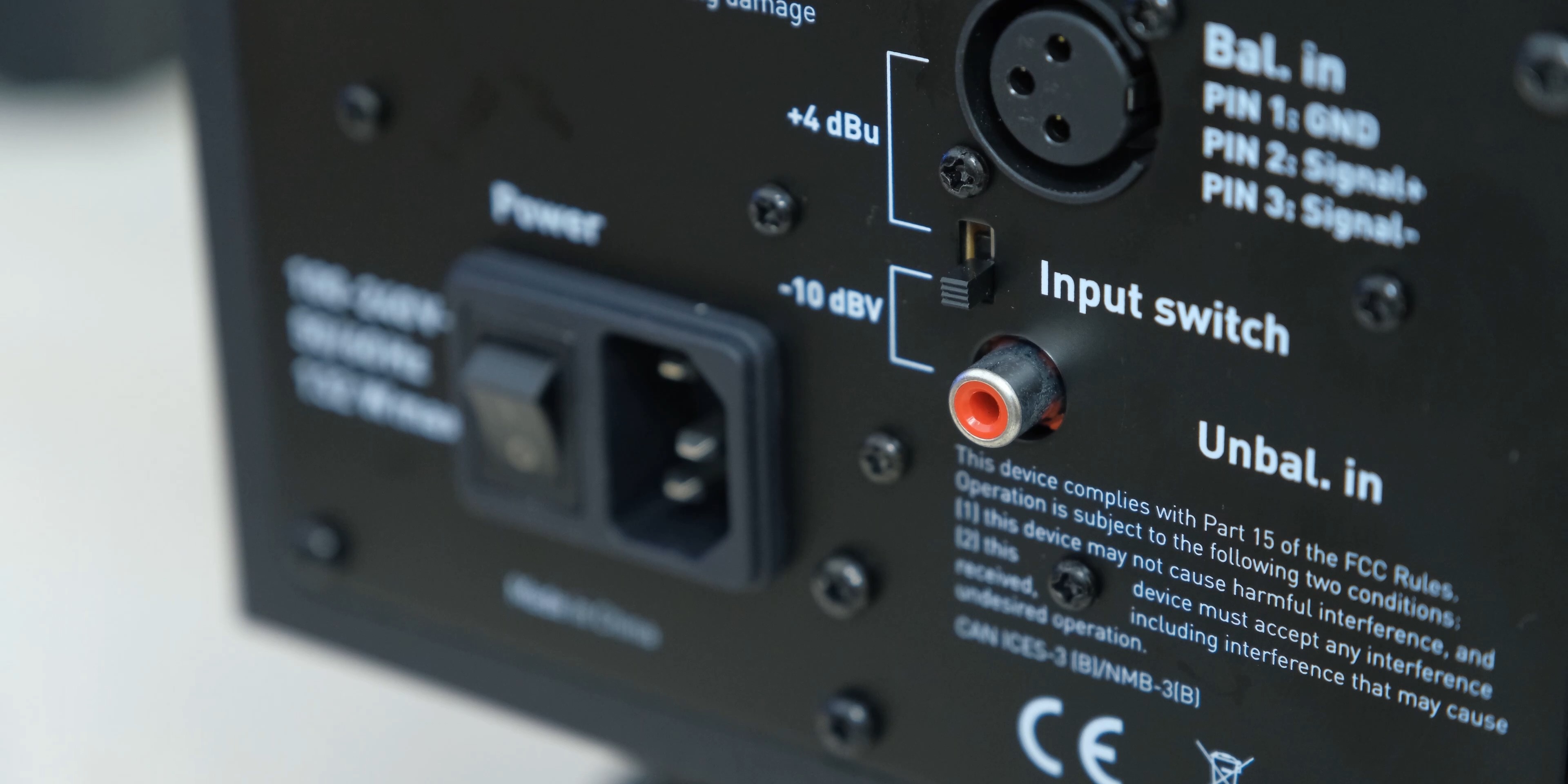
while the T5Vs have a button that switches between their RCA and XLR inputs, so you will have to manually change that if you have 2 devices plugged in.
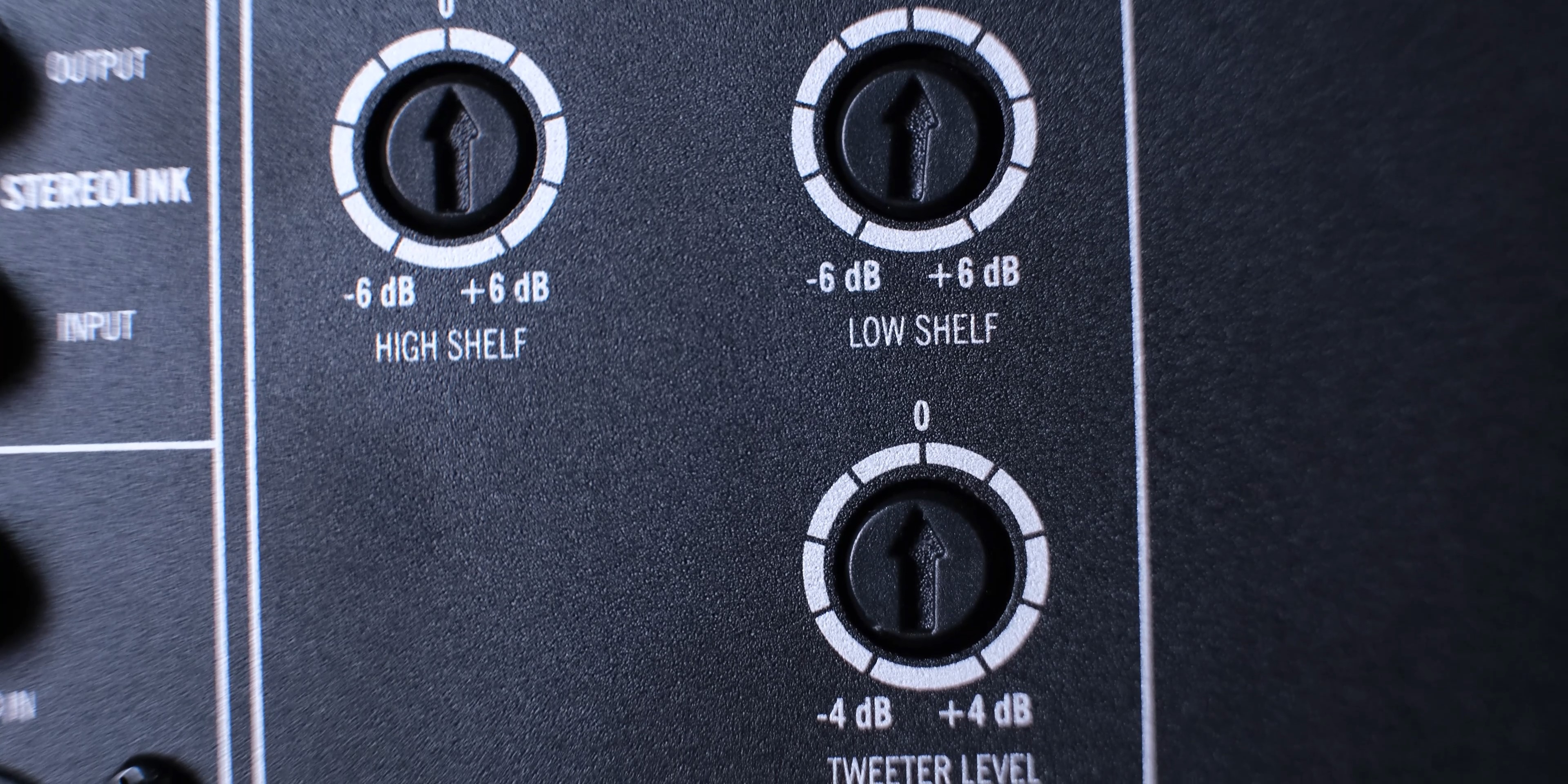
Then, a very nice feature on the A5X are these knobs which you can turn to control their frequency response in a very granular way by upto positive 6 or negative 6 decibels, so you can turn one of these knobs to control the High frequency response from 5kHz, and then the knob on right to control the low frequency response at 300Hz, and then there’s another knob for tweeter level, which can be confusing,
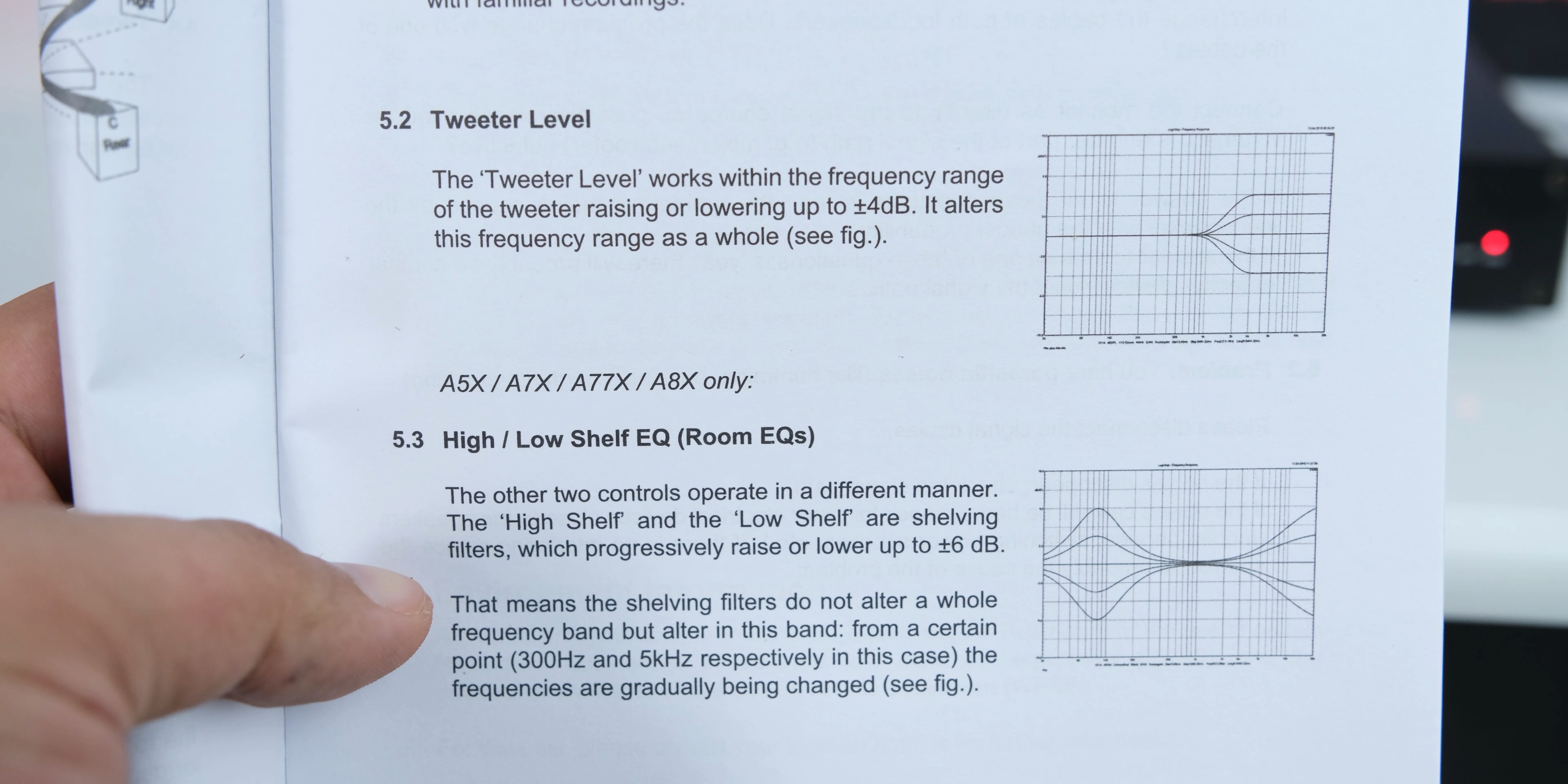
but what is does is that it alters the overall level of the tweeter and frequency range, instead of altering from the 5kHz band, and this is adjustable upto positive or negative 4 decibels instead of 6 decibels.
With these controls, you can alter their sound to match the acoustic character of your room to make them sound more balanced, and if you just listen to them casually, you can increase or decrease the bass and treble response according to your liking. I personally set everything to 0 because in my room they sound very engaging, even with their default settings.
The T5Vs also feature high and low shelf adjustments up to 2 decibels instead of 6 decibels, but I think that this should also be good enough for the majority of users.
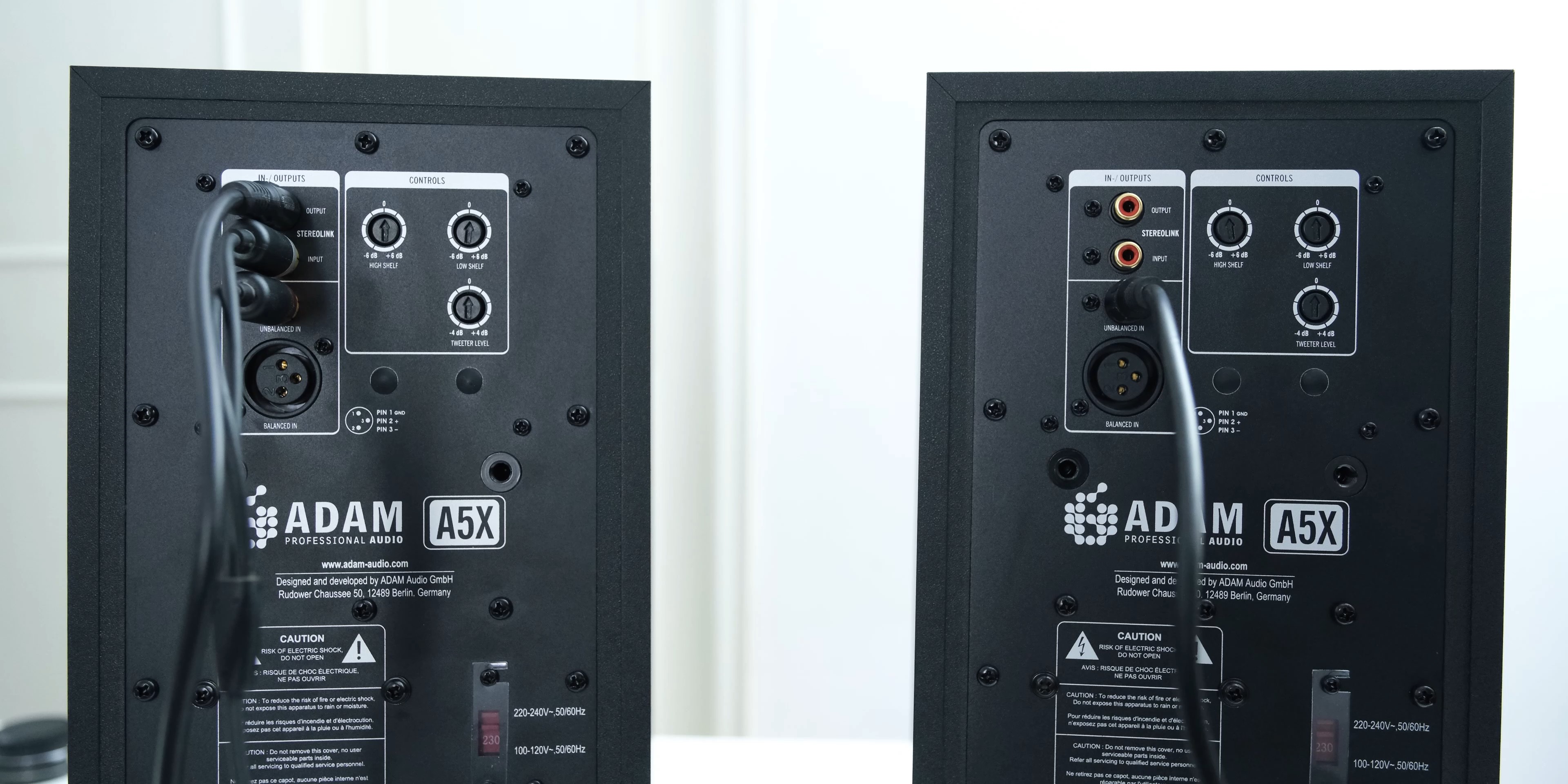
The A5X also feature stereo link, which can be a very useful feature, because it allows you to send both the left and right signal to one speaker, and then from that speaker you can send a single cable to the other speaker, and that allows you to control volume for both of these speaker with just one master speaker. It only works with RCA and not XLR, so just keep that in mind.
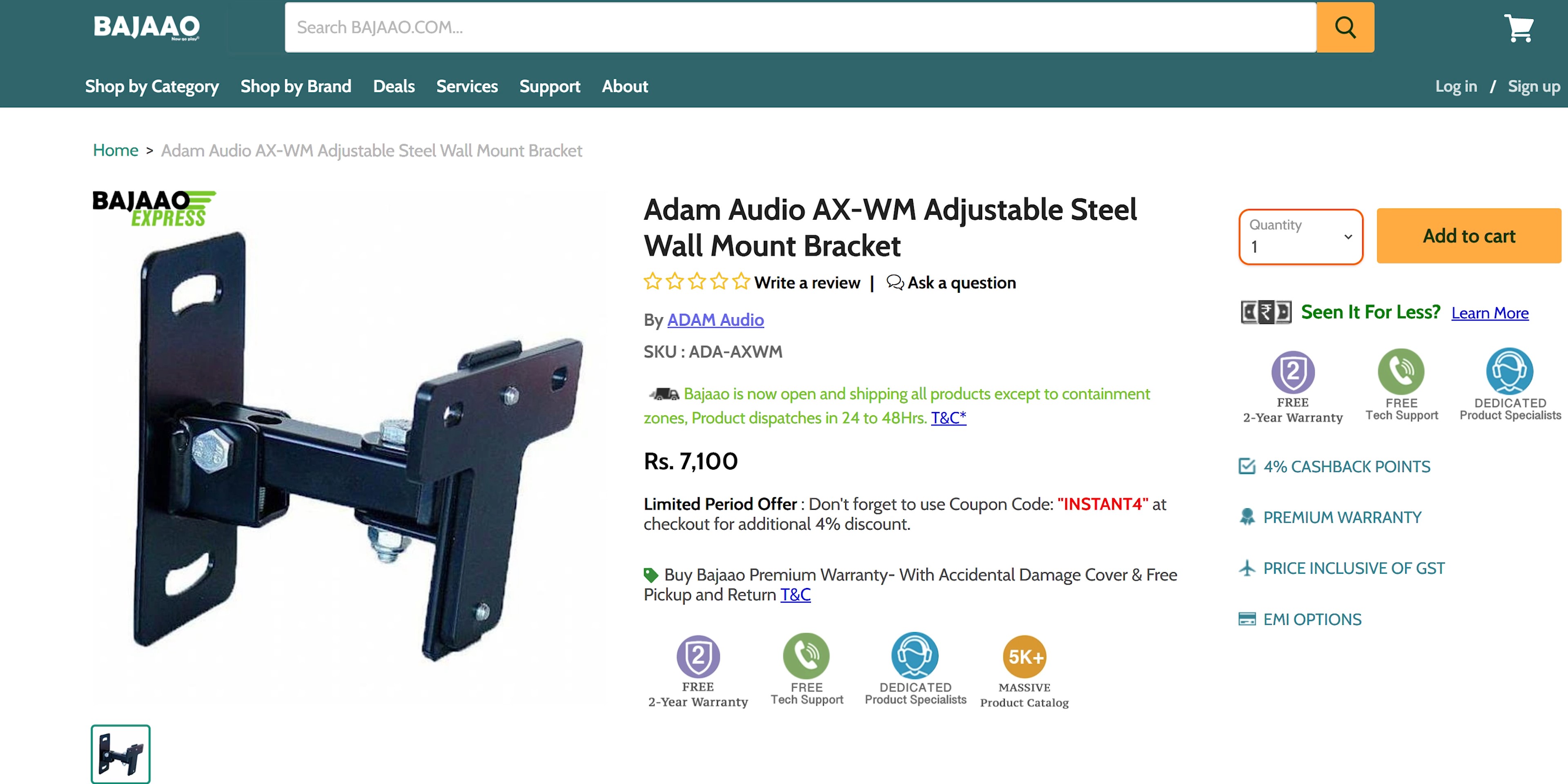
These can also be wall mounted if you buy the additional wall mounts for these, and that can be really useful because it can free up a lot of space on your desk.
AMPLIFIERS
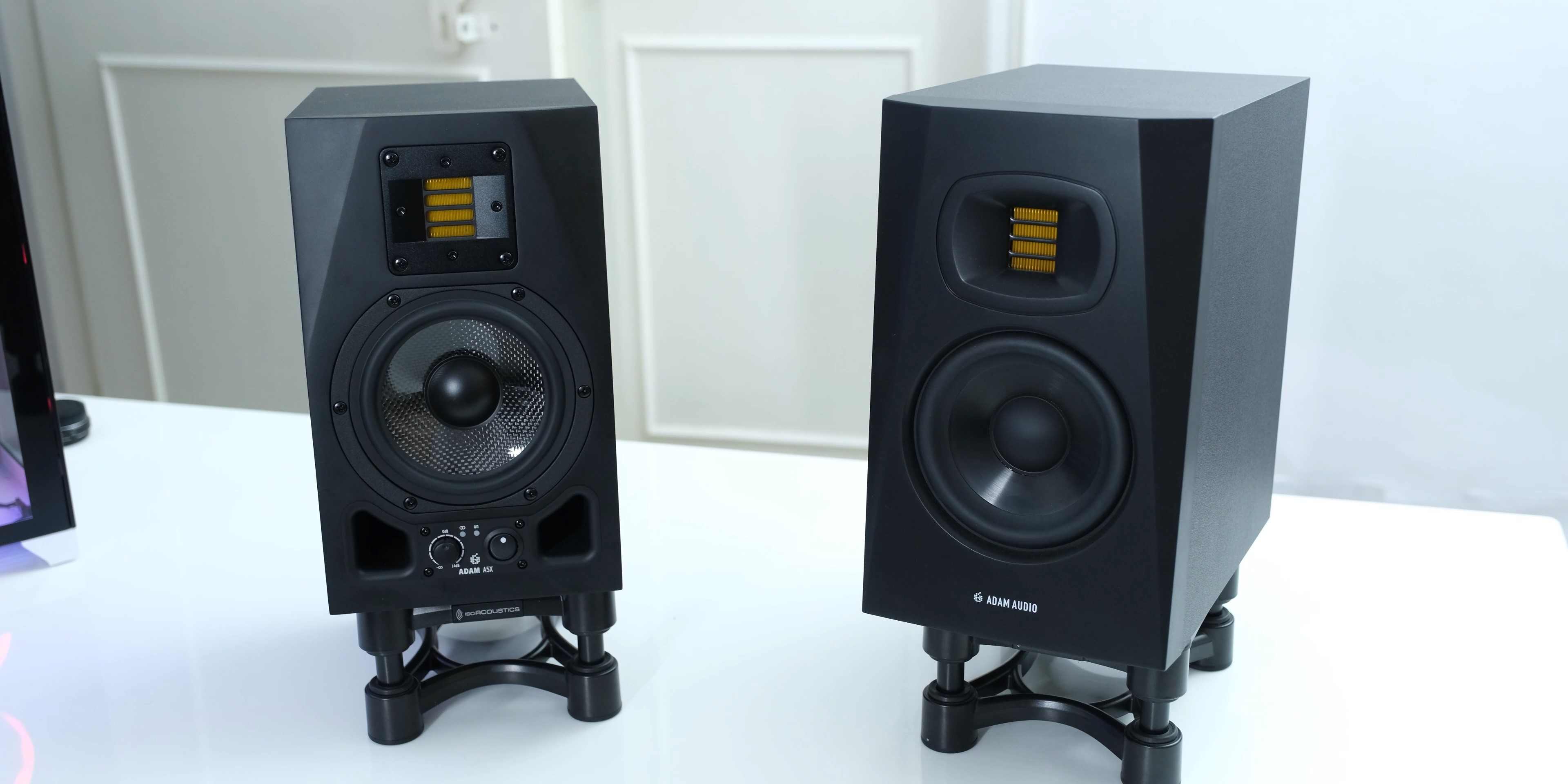
One notable difference between the A5X and T5Vs is that while the T5Vs use Class D amplifiers for both of their tweeters and woofers, on the A5X, we have a Class D amplifier for the woofer, and a class A/B amplifier for the tweeter.

Amplifier comparison is a very complex topic, and one type of amplifier may not always be better than other type of amplifier, and the Class A/B amplifier must have been chosen with the A5X because of its sound characteristics, but these amplifiers do get hot compared to Class D amplifiers, so the T5Vs just stay a degree or two above room temperature, while the A5Xs can go up to 45 degrees celsius at their back. It shouldn’t be a problem within the operating temperature of up to 40 degrees celsius, but I do turn the A5Xs off when not using them, while with the T5Vs you can just keep them on 24×7 without needing to think about power consumption or heat.
THE X-ART TWEETER
The A5X feature Adam’s X-Art tweeter, which is an Air Motion Transformer Tweeter that works in a very different way than a conventional dome tweeter, it has a much larger surface area and can push air 4 times faster than dome tweeters.
Adam has different names for their tweeters in their lineup in different price ranges, and the u-Art, X-Art, and S-Art are just names assigned to these tweeters. The u Art tweeter on the T5Vs goes up to 25 kHz, but the X-Art tweeter goes up to 50 kHz. Now both of these limits are of course way beyond human hearing range, but it does show how capable these tweeters are.
SOUND QUALITY

I have talked about the sound characteristics of these tweeters in my T5V review, but it basically feels like the sound is coming from a source that is way bigger in size than small tweeters, and it is a very powerful presentation in the highs that keeps up with the displacement of the woofer, and on these A5Xs there really is a significant upgrade on the tweeters over the T5Vs, so it sounds even more non fatiguing while still being very detailed and retaining all the energy.
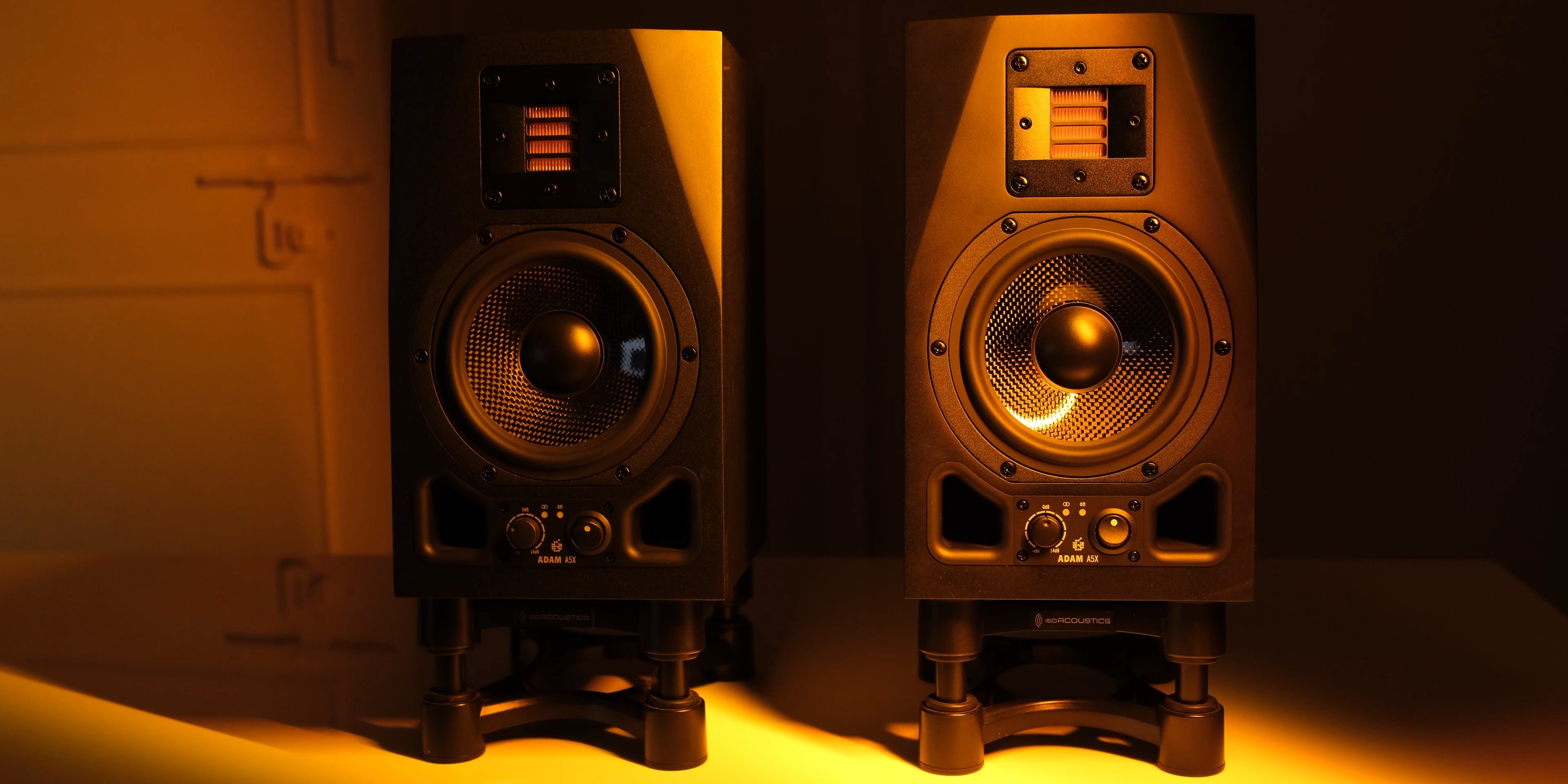
These are studio monitors, which means that they deliver a flat sound signature, so these are meant for professional level work with sound, and if you are going to use these in your studio for mixing and mastering, they are going to work really well and I’ll talk more about that soon.
But a misconception I see in minds of people is that studio monitors sound boring because they’re flat, but in my experience that has never been the case, especially with both of these models of Adam speakers, and the A5Xs are on a totally next level.

We are going to talk about the technical aspects of their sonic performance, but simply speaking, the sound that I get from these speakers is what I was looking to get from speakers for a very long time. When I listen to these speakers, I do not feel like I need an improvement in any area of the presentation of their sound, the T5Vs are also really great, but they don’t reach the perfection and ‘magic’ that the A5Xs have. These really do have the potential for becoming endgame speakers even for audiophiles, and endgame is not a word that I use lightly.
The tweeter and the woofer on these speakers just integrate in such a perfect cohesion, that it really makes it a little difficult to discuss the high, mid, and low frequencies separately. That is because as I try to describe their sound, I don’t think about how good the highs or lows are specifically, but how amazing the overall experience is that I have with their sound.
These speakers have an extremely realistic and detailed presentation of sound, with a VERY 3 dimensional quality to their soundstage. And it’s not just the left and right stereo image that is great with these speakers, but it is the depth and width of the soundstage, and the precision of the placement of the instruments in the 3D space that takes their sound on the next level.
The sweet spot for listening to these speakers is also surprisingly wide, so even when you are in very odd positions in front of these speakers, they still deliver that holographic listening experience.
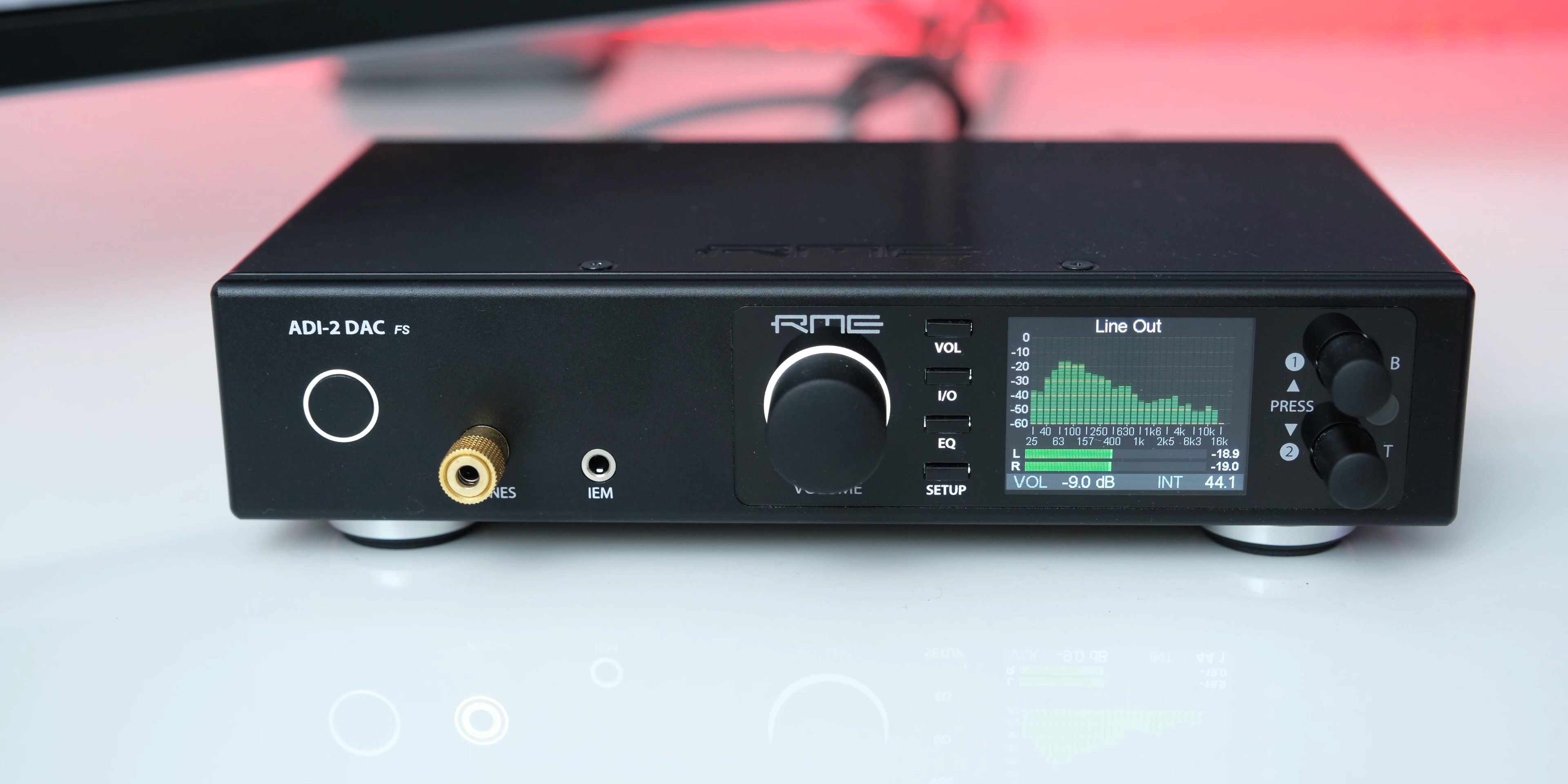
Now I have to mention that this depth that I am talking about was greatly increased by the RME ADI-2 DAC that I used to test these speakers, I was using a $100 SMSL DAC earlier, and then I switched to this $1000 RME, DAC and it really improved the 3 dimensional aspect of the sound, and better DACs will benefit all speakers, but this also shows how revealing these speakers are of your audio chain, because with a lower quality of speakers, you may not hear a big difference when switching DACs.
The highs on the a5xs really surprised me with how detailed they are while still being natural and easy to listen to, even when keeping their price tag in mind. These tweeters really reveal the details in a very effortless way, and even though I was expecting them to be easy on the ears, I didn’t think that they would also retain the naturalness and realism along with the details, because that’s actually not easy to achieve.

The highs are of course also very well extended, which is what gives the instruments the completeness in their sound, and the high frequency extension in isolation is actually pretty close between the A5X and T5Vs.
Now even the T5Vs are very detailed and resolving speakers, but the A5X have micro details of instruments that makes them extremely realistic. I was listening to a track that had Tabla in it, which is a kind of an Indian Drum, and when you hit the top part of this instrument, it continues to create a very quiet sound after the initial hit as its membrane vibrates, and that micro detail is audible with these speakers, which is something I have not been able to hear, except when being physically present with this instrument during the time I studied Indian classical music.
So just as soon as I got these, I called my friend Vaibhav and told him that he had to have a listen to these speakers now, and then when he arrived we turned on one of the tracks in Naruto Shippuden OST (which is a series that we are kind of emotional about as we grew up watching it).
The Japanese Violin in that track sounded SO realistic and moving, that I had to stop the playback because both of us were about to tear up, and even though it is completely fine for men to cry, we personally try to avoid that in front of our friends.

What Vaibhav said about his experience with these speakers was that it felt like the sound was directly going into his brain, which is something I can see someone feeling because they really do an amazing job of disappearing from front of you as sound sources and you really hear sound from that 3 dimensional space that I talked about.
The T5Vs also have this quality of disappearing from front of you, which many good speakers do, but the A5Xs do that in a very noticeably better way, and the 3 dimensional space sound source is much larger with the A5X.
The mids on these are also extremely natural, and the vocals sound really lifelike, and both male and female vocals sound equally excellent on these because of how good the bass and treble is. Because these are so resolving, you also hear a good separation between voices when multiple singers are there, and it is a cliché in audio gear reviews to say that it feels like the singer is singing in front of you, but once you close your eyes while sitting in front of these speakers, it is difficult to not have the feeling of being physically present with the singers.

Finally coming to the bass, this carbon fiber woofer with these exotic materials doesn’t only look good, but also performs extremely well.
The bass on these is very tight and very well controlled. Generally with very revealing and natural sounding audio gear, I lean more towards naturally recorded music with natural instruments and unprocessed vocals, but another pleasantly surprising quality about them was how good electronic music sounds with these.
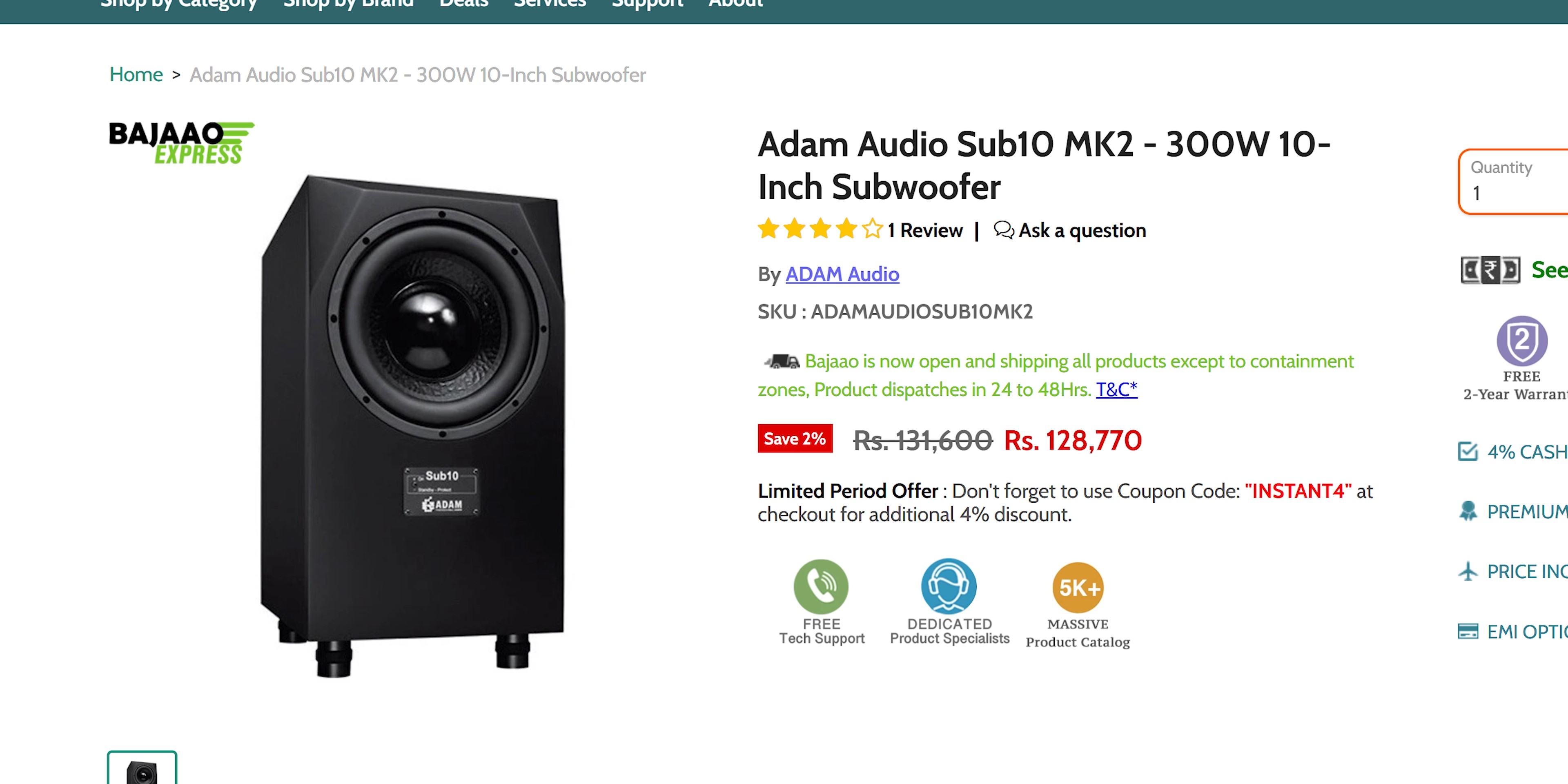
Personally I didn’t feel the need of a subwoofer with these for my listening purposes, but if you work with music that has important information in low end, you can buy one of the matching subwoofers that Adam sells.
If you are going to add subwoofer to these speakers, then I would really recommend that you buy a very high quality subwoofer and don’t cheap out, because if you get something that can’t match the control and tightness of the bass on the woofer on these speakers, it could really worsen the sound instead of improving it.

You can also go for the bigger A7X or A8Xs if you need a low end that extends lower than the 50Hz limit on these speakers, which is actually 5 Hz higher than T5Vs, but in practice I didn’t feel that one of these speakers extended lower than the other.

So with their excellent performance across the frequency range, the A5X really handle every genre of music equally well, and all kinds of instruments sound really amazing on these, so strings in orchestral music, acoustic and electric guitars, drums of all kinds sound hyper realistic.
A5X vs. T5V

Now in comparison to the T5Vs, I would just start by saying that the T5Vs sound really excellent, so just because the A5Xs are better doesn’t mean than they aren’t good, but when you put them side by side to the A5X, you do notice differences.
The Adam A5Xs have bass that I feel is much tighter. Now I am not in a room that is properly acoustically treated, and I do position my speakers kind of close to the wall, so I think that the A5Xs may have been getting an advantage because of their front ported design, but I think that even in a well treated room with better positioning of speakers, the A5Xs would have tighter sounding and more resolving bass than the T5Vs.
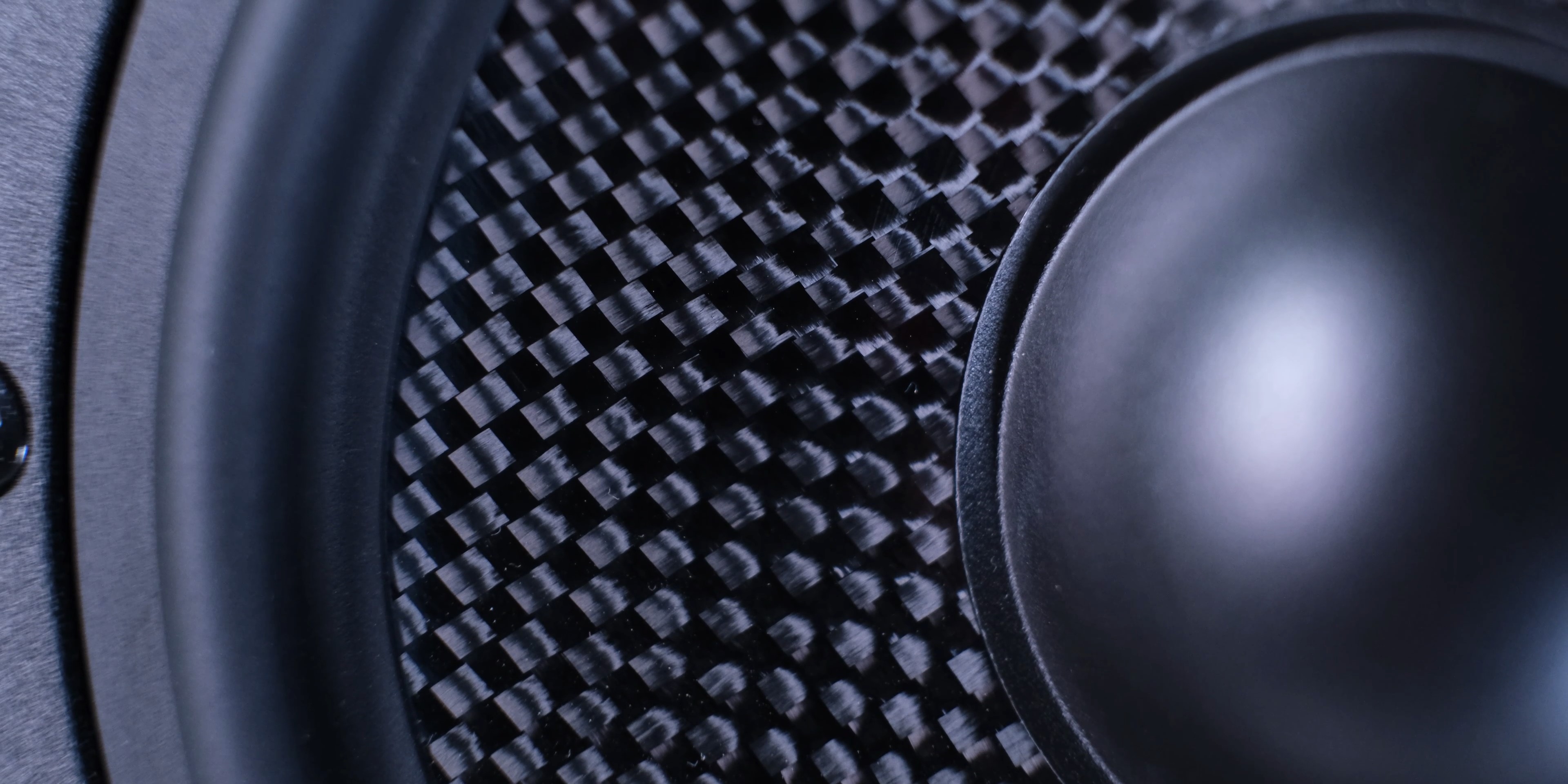
The woofer on the A5Xs just perfectly matches the sonic excellence of their tweeter, while with the T5Vs, I felt that tweeters were the star of the show, with the woofers being good, but not as special as the tweeters.
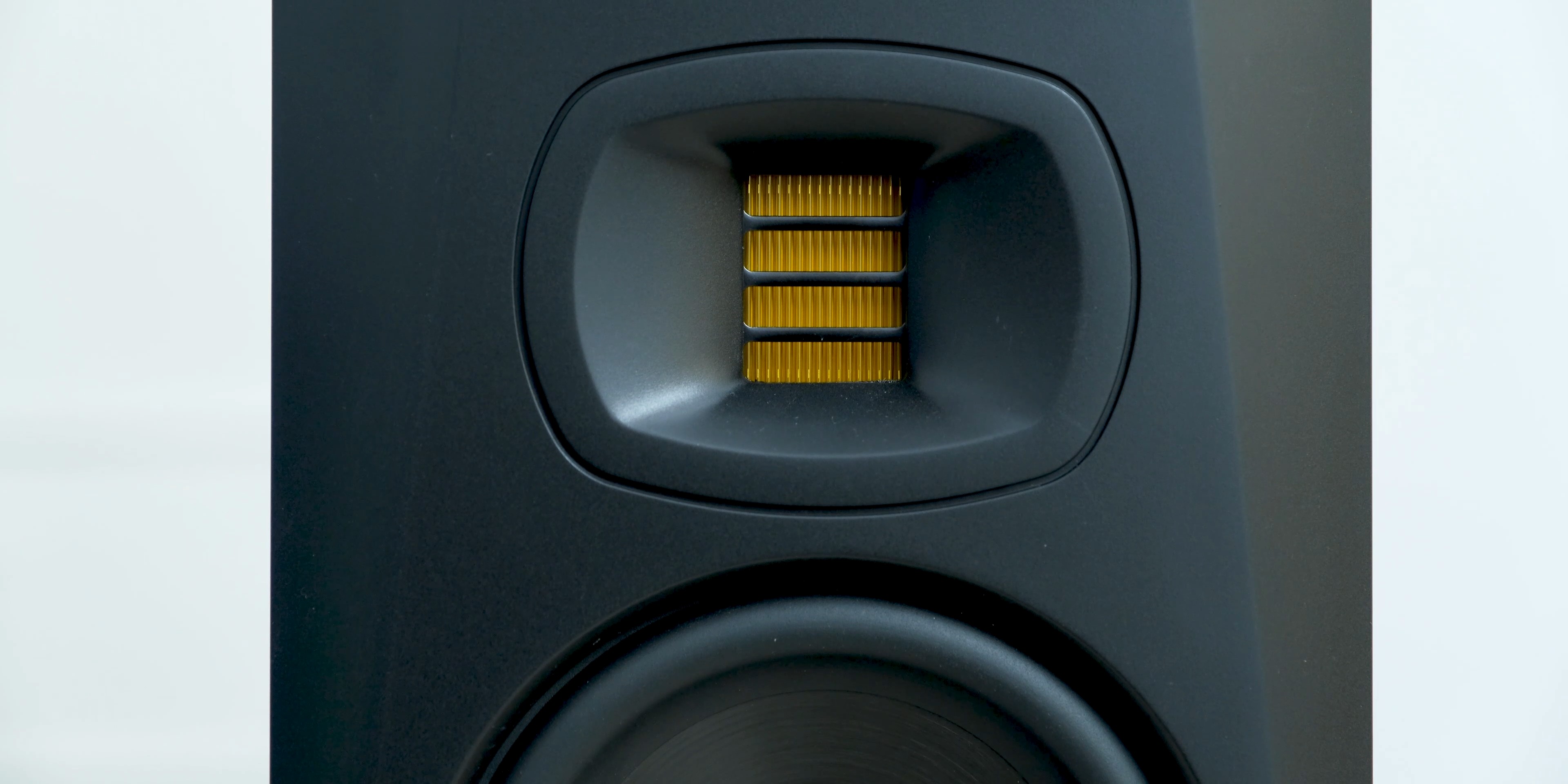
Coming to the tweeter, the A5Xs also have a significantly improved driver over the T5Vs. While the tweeter on the T5V is also very detailed, and revealing of the audio, the X-Art tweeter just performs on another level as I said, and the presentation of their sound is more natural, and the imaging of the instruments is also more precise with a greater depth and width, and 3 dimensionality.
CONCLUSION

So if you have up to a 400 or 600 dollar budget, and you can’t extend it, then I would easily recommend the T5Vs. You are getting speakers that are really great for everyday use, and for working with sound too. The T5Vs sound really great, and I just didn’t talk about them as much, because this is an A5X review.
But then if you have reached up to a 700 dollar budget, and you can save up and manage the 1000 dollar price tag of the A5Xs, then I would absolutely recommend that you get the A5Xs.
And the reason for that is that with audio gear, there is a law of diminishing return, so unlike their price tag, I can’t exactly say that the A5Xs sound more than twice as good as the T5Vs, because I don’t think that we can quantify audio quality in percentages like that.

But considering how the sound quality with audio gear scales up with price, the A5Xs scale up extremely well on that curve, and the improvement in sound quality is absolutely worth the increase in price.
Even if you leave out features like volume control on front, the more granular sound control knobs at back, wall mountable design, and stereo link, the greater immersiveness, micro detail, and imaging just pushes their sound to become extremely natural and lifelike, and that jump in the realism is something that I feel is totally worth it.
Even though the T5Vs have become well known for the value for money they offer, I can’t say that the A5Xs don’t also offer a really good value for money, even at their higher price point.
If you’re working with sound professionally, the T5Vs will also allow you to hear what’s going on in your mix in great detail, but if you are a person who has to work a lot with lower frequencies, I do think that the more resolving woofer of the A5Xs will really help.
I really thought that this review would focus more towards how good the A5Xs are technically, and how the audio professionals will be able to create great mixes with a balanced sound. But I really didn’t expect that the experience with the A5X would be so moving that I would just keep going from one track to another to hear how good it sounds. They are distractingly good, and they’re obviously great for gaming and movies too.
So if you are able to afford these for casual listening, I really can’t recommend them enough, and all the professionals that I have seen using these and the other models in the AX series must also be having a really great time while working in their studios.
⭐ Adam Audio A5X:
India: https://amzn.to/3jEc2wO
US: https://amzn.to/30FhCHB
⭐ Adam Audio T5V:
Review: https://youtu.be/TbuSqNfh2uY
US: https://amzn.to/2N7w3O8
India: https://amzn.to/34loadM
⭐ RME ADI-2 DAC FS:
India: https://bit.ly/36fi8jn
US: https://amzn.to/30bYa4Z
⭐ Isoacoustics Speaker Stands:
Review: https://youtu.be/RjPeWvxpDDY
US: https://amzn.to/2JEINtv
India: https://amzn.to/36qOCo7
